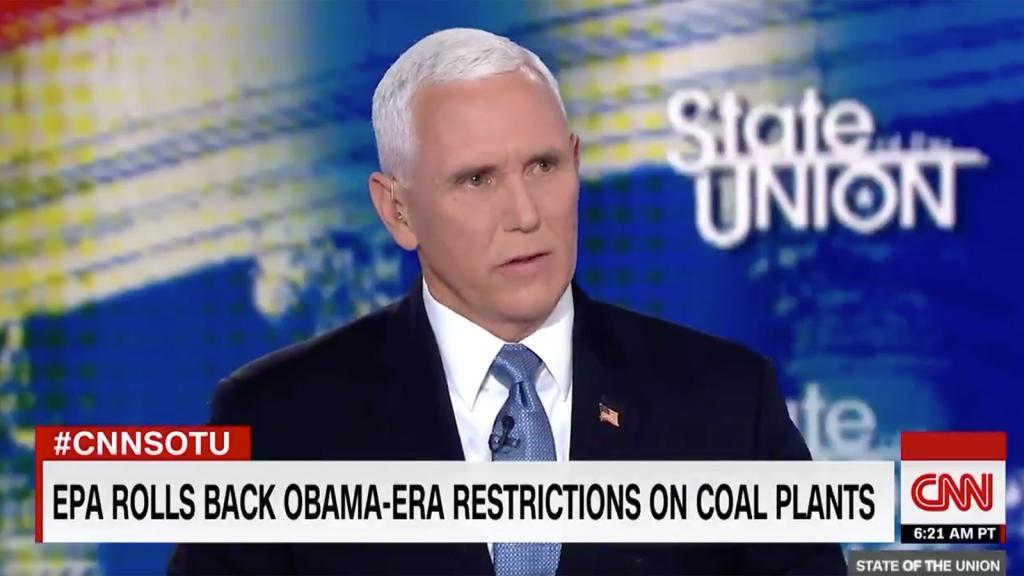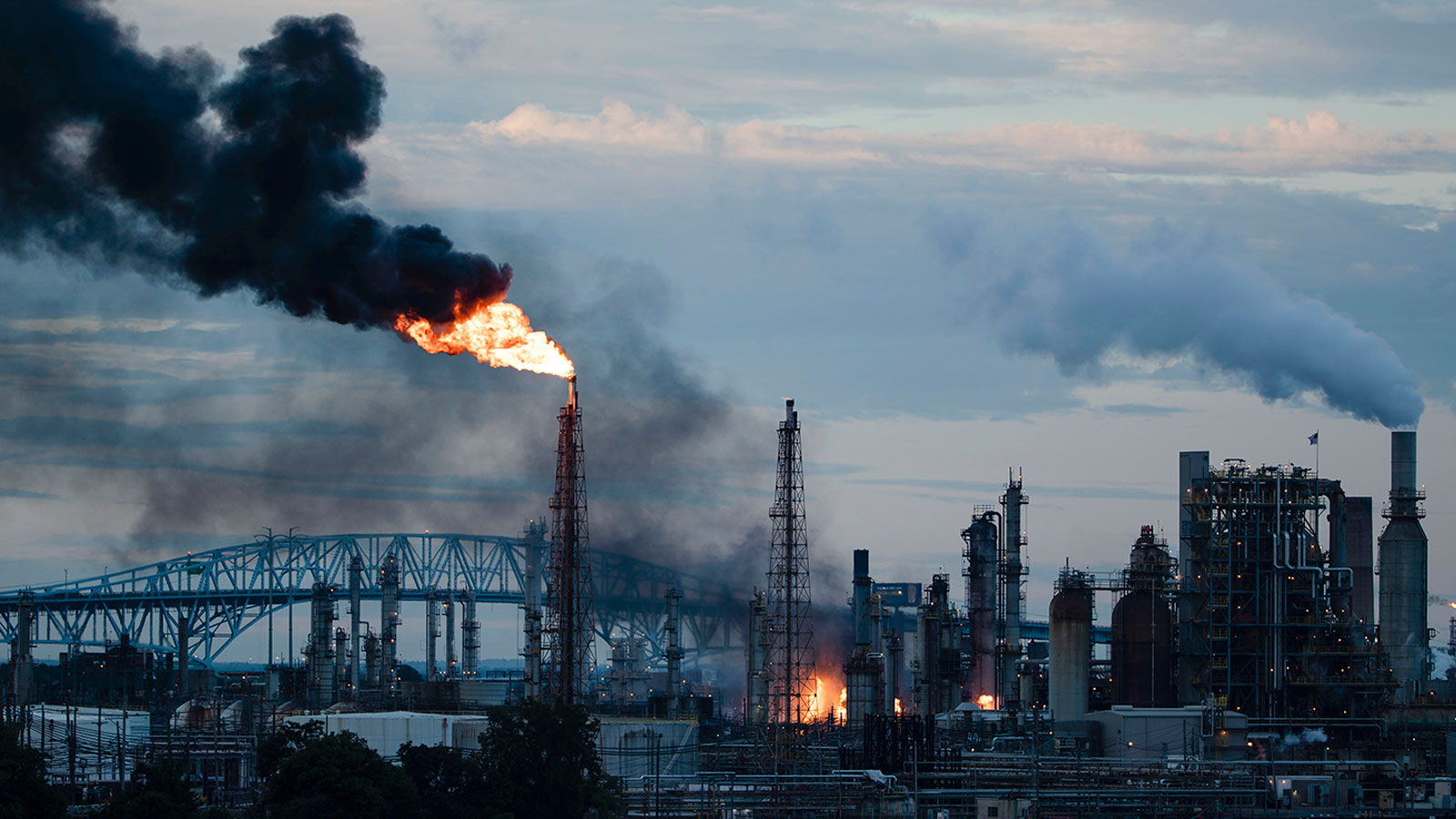When a loud blast awakened Irene Russell at 4 a.m. Friday morning, she thought someone was trying to break into her family’s South Philadelphia home. But then the 67-year-old looked outside and saw dark smoke covering the sky and large pieces of debris raining down on the neighborhood streets. Less than three miles away, a vat of fuel at the Philadelphia Energy Solutions refinery, the largest oil refining complex on the East Coast, had just burst into flames.
The blast, which consisted of at least three explosions, was so strong it reportedly shook houses and knocked artworks off walls. One was detected by a meteorological satellite all the way from space. It wasn’t the first time the 150-year-old refinery, one of the oldest in the country, had caught on fire. Numerous incidents have occurred at the plant in previous years. In 2009, the previous owner, Sunoco, was cited due to a hydrofluoric acid leak, a hazardous substance that can spread for miles as a gas. Just last month, a smaller fire broke out, prompting local grassroots organization Philly Thrive to protest outside the refinery’s gates.
Nearby residents aren’t just concerned about lost sleep. The plant, which processes 335,000 barrels of crude oil each day, is the largest source of particulate air pollution in Philadelphia and has been in violation of both the Clean Air and Water Acts.
According to city officials, Friday’s explosion has not worsened the air quality in or around the plant. James Garrow, the director for communications for Philadelphia’s Department of Public Health, said officials went to the refinery early Friday morning to collect up- and downwind samples and conduct airtime monitoring around the area. Garrow said they didn’t find any elevated levels of carbon monoxide and other combustibles in nearby communities. “Our readings told us that there was no threat to human health,” Garrow told Grist.
But many South Philadelphia residents remain concerned, saying they have seen friends become sick due to the air pollution from the refinery.
“We’re tired because we’re losing too many people from [fossil fuel companies],” said Russell, who is a Philly Thrive member.
A Philadelphia fenceline community
South Philadelphia has always been a cultural hub for the city, home to the famous Italian Market, pockets of Asian and Latin grocery stores, and the best Philly cheesesteaks. The neighborhoods of Point Breeze and Grays Ferry, in particular, have a fairly concentrated African American community. But these very neighborhoods are also near major arterial highways, the Philadelphia International Airport, large industrial factories, a biofuel facility, and other refineries. Many residents also feel they suffer from disproportionately high rates of asthma and cancer.
Carol White, who lives only about a mile away from the refinery, was diagnosed with asthma on Mother’s Day this year. After being awakened by the blast last week, the 59-year-old began smelling the fumes and immediately turned off her air conditioner. White said she started having headaches and a hard time breathing, so she immediately got in her car and drove away from the city.
“Living so close to the refinery, you can really smell the gas and fumes,” said White. “Some people can’t afford to get up and move, and there are older people living here inhaling fumes, newborn babies, kids under five, and ultimately, it’s impacted people of color.”
Like many other fenceline communities — those located closest to refineries and other point sources of pollution — South Philly residents are exposed to harmful chemicals. According to a comprehensive economic analysis by the University of Pennsylvania’s Kleinman Center for Energy Policy, the soil and groundwater at the site of PES have been highly contaminated with hydrocarbons. Chemicals such as benzene and toluene — human carcinogens — plus several other toxic compounds such as lead have drifted offsite.
Even though officials have denied that last week’s fire was associated with a decrease in air quality, Peter DeCarlo, an air quality expert and professor at nearby Drexel University, said that a plume of black smoke released in the air does signify the presence of particulate pollution. It’s similar to the fumes you see coming out of a diesel truck, he explained, warning that because of the incident, he suspects there will be an increase in hospital patients with respiratory health issues.
Part of the problems associated with the PES refinery may have to do with its age and bleak financial track record: In January 2018, PES filed for Chapter 11 bankruptcy to restructure more than $100 million in debt while putting blame on the federal government’s Renewable Fuels Standard. Two months later, the U.S. Environmental Protection Agency granted the company temporary financial relief. Then a week after that, the state of Pennsylvania demanded to stop the bankruptcy because PES owed approximately $3.8 billion in fuel taxes. PES emerged out of bankruptcy in August 2018, only to be caught in another financial fiasco in early 2019. The company has been laying off employees, while senior executives have resigned — all of which could lead to the company neglecting maintenance issues.
“Some may believe that after emerging from bankruptcy reorganization in August 2018, there is no longer a need to pay attention to what’s happening at Philadelphia’s neighborhood refinery,” wrote Christina Simeone, a senior fellow at the Kleinman Institute. “But, the exact opposite is true. Now, more than ever, involvement from municipal leaders and the public is pivotal.”
An ongoing investigation
The investigation into Friday’s fire is just getting started, but nearby residents say the refinery’s response to their safety concerns is long overdue. The neighborhood also stands to face additional health burdens as the Philadelphia City Council recently approved the construction of a $60 million liquidated natural gas plant next to PES. The project is expected to ring in up to $4 million in revenue for the city-owned Philadelphia Gas Works per year.
On Tuesday, as they have for the past two weeks since the last fire, Philly Thrive will march back to the refinery gates to protest for better air quality for South Philly residents.
“This was not the first explosion or the first approval of a new fossil fuel project,” said Alexa Ross, an organizer with Philly Thrive. She said the latest explosion has already drawn public attention to the actions of the company, and that her group “will continue to fight alongside communities across the globe” until the fossil fuel industry speaks up, addresses their concerns, and “ensures future generations have a livable planet.”
“We have built a base of resident leadership that is challenging the viability of fossil fuels in Philadelphia,” Ross said. “If you’re paying attention, you can see the tide turning.”



